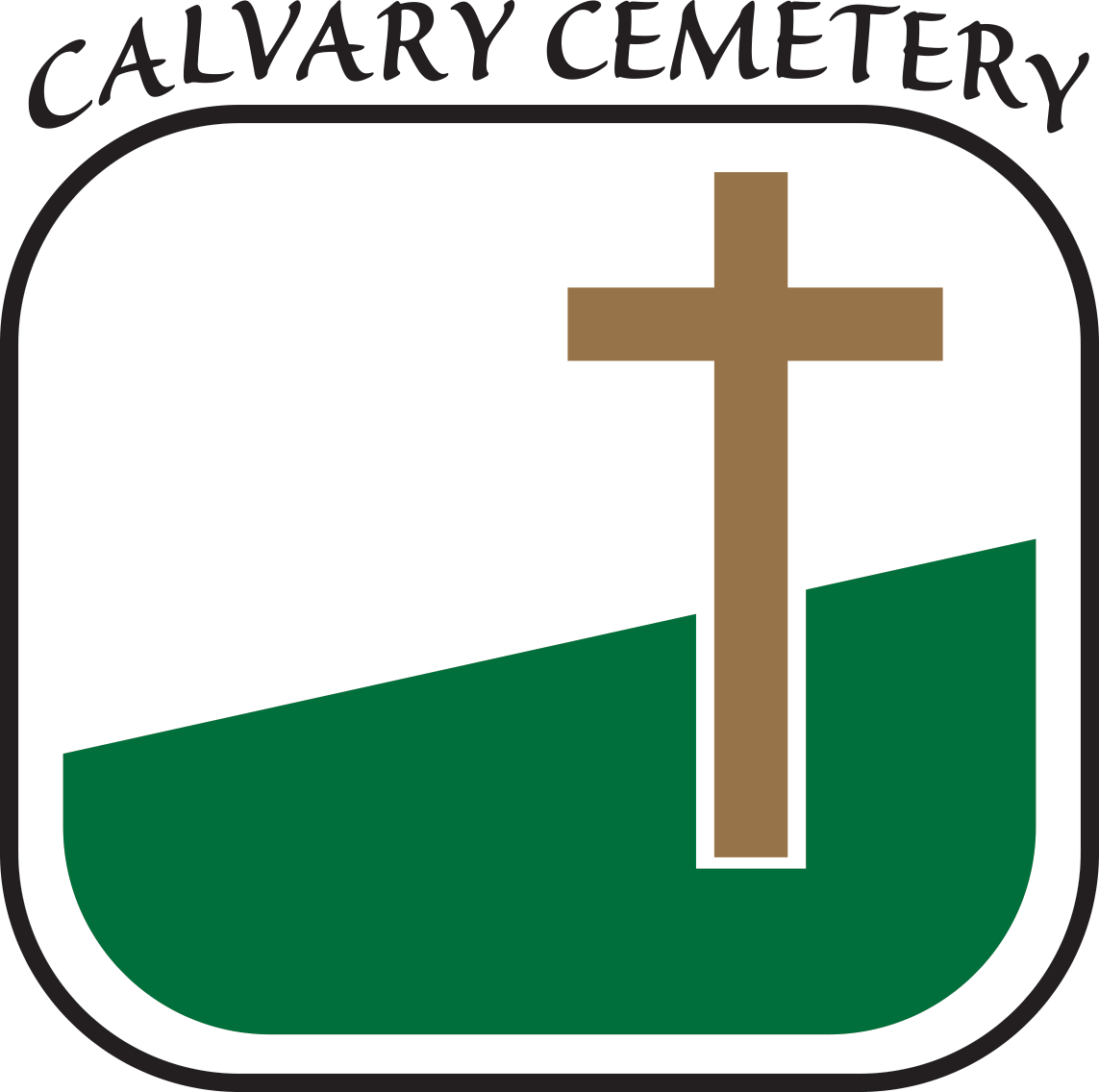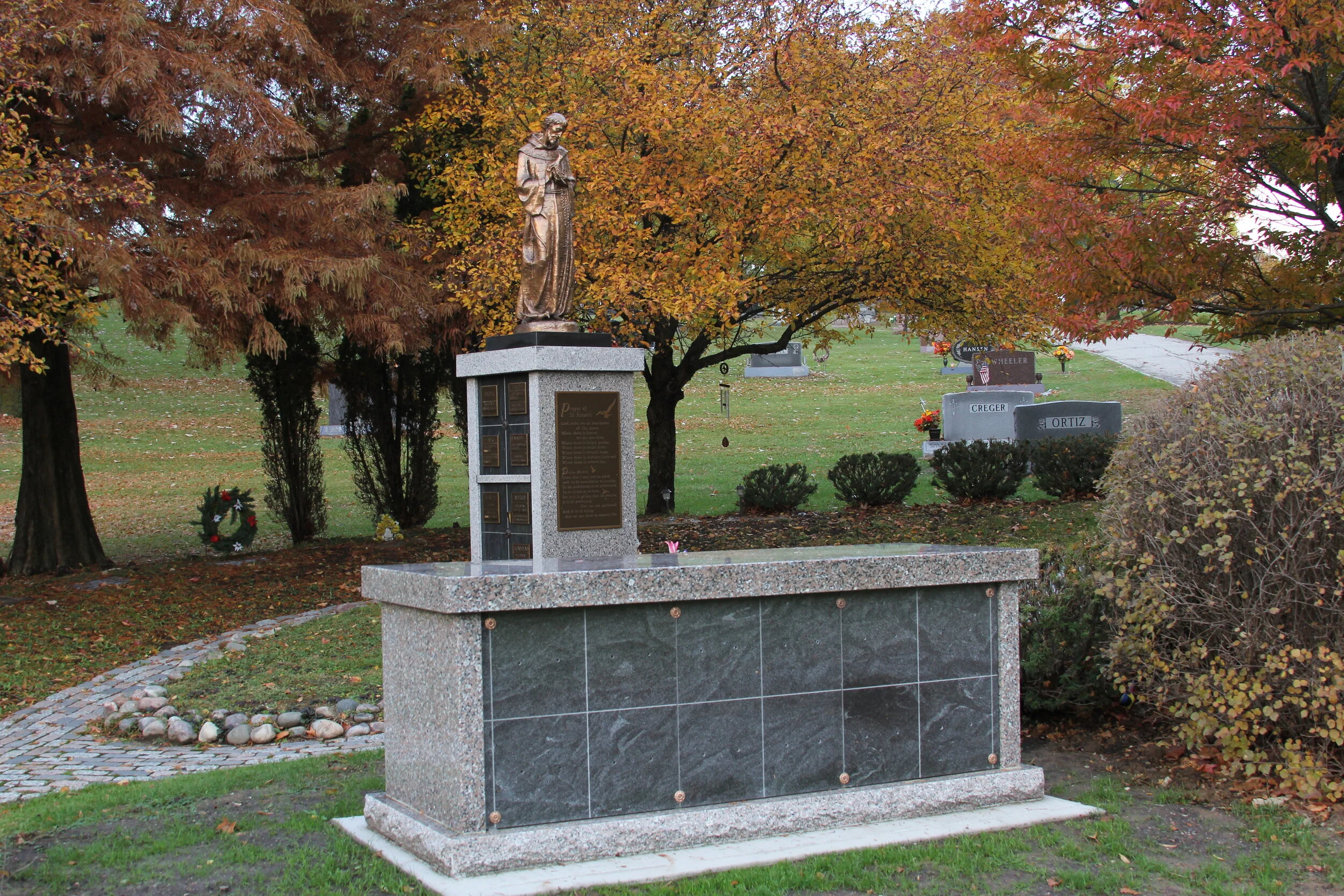Cremation
Here are answers to common questions about cremation that summarize Catholic teaching and practice regarding this burial practice. We hope this information helps Catholics to better understand how the practice of cremation can be accomplished within a Catholic context, especially in relation to our funeral and burial rites.
What makes cremation Catholic?
Cremation is Catholic when it is “of the Church” — that is, everything surrounding cremation, in all aspects, embodies the faith and practice of the Church. Cremation for Catholics flows from the mission of the Church—to teach, to come together in community, and to serve.
Cremation is Catholic when the Order of Christian Funerals is celebrated in its liturgical fullness. This includes prayers at the time of death in the presence of the body, a vigil prayer during the time of the wake, a Funeral Liturgy, and the rite of committal.
Cremation is Catholic when the cremated remains of the body are committed to the ground or a niche in a Catholic cemetery. As part of a continuum of faith with the parish community, Catholic cemeteries call to mind the resurrection of the dead and the Communion of Saints.
How should a Catholic plan for cremation?
First, discuss your questions with a knowledgeable pastor or parish staff person.
Second, if your decision is to be cremated, make your wishes known in your will or in documents designed to help plan your funeral and burial. Provide copies of these documents to family members, your pastor, funeral home, or Catholic cemetery.
Lastly, as you plan, keep in mind the therapeutic value to your family of celebrating the full funeral liturgy with the body present.
Think of cremation of the body and committal of the remains as the conclusion of a funeral with the body.
What happens in the cremation process?
Cremation is the process of reducing the human body to calcium fragments by means of high intensity heat, approximately 1800 degrees, for a period of two to three hours. The process takes place at a licensed crematorium. Once the cremation is performed, state law regarding final disposition of the body has been satisfied. However, following the completion of the cremation process, Catholics must inter the cremated remains in a cemetery, preferably a Catholic cemetery.
When should cremation take place?
The Church prefers that cremation take place after the full funeral liturgy with the body. Sometimes, however, it is not possible for the body to be present for the funeral liturgy. When extraordinary circumstances make the cremation of the body the only feasible choice, pastoral sensitivity must be exercised by all who minister to the family of the deceased.
When choosing cremation, is it necessary to purchase a casket and embalm the body? If the body is present for the funeral liturgy, with cremation to follow, you may rent a casket or purchase a special cremation casket that will later be consumed in the cremation process. In most cases, the purchase of a cremation casket and simple embalming need not involve excessive costs. In situations where the body cannot be present for the funeral liturgy, a casket would not be necessary nor would the body need to be embalmed. However, the crematorium requires that the body be placed in a combustible, outer container prior to entry into the cremation chamber.
What is a proper container for the cremated remains?
After cremation of the body occurs, the cremated remains must be placed in an appropriate container. An appropriate container need not be expensive. The crematorium usually returns the cremated remains in a plastic container, which may meet minimum requirements for inurnment in the cemetery. Classic urns, made of metal, bronze, or wood, can also be purchased from the cemetery or the funeral home. Other worthy vessels, made of suitable and respectful material, already in a family’s possession may also be used.
Although jewelry, dishes, statuary, and space capsules are offered commercially, they are unacceptable receptacles for cremated remains in Catholic funeral practices. It is also unacceptable for Catholics to have cremated remains made into jewelry, artwork, or other objects of display or consumption.
When cremation is chosen, what are the funeral liturgy options pertaining to the Order of Christian Funerals?
Presence of the body at the funeral liturgy: The Church prefers and urges that the body of the deceased be present for the vigil and the funeral mass, since the presence of the body better expresses the values which the Church affirms in these rites. In this scenario, following the funeral liturgy at the parish church, the family may find it consoling and meaningful to go in procession to the crematorium and be present for the placement of the body into the cremation chamber. In any case, after the cremation is completed, the family should gather later for the Rite of Committal at the cemetery.
Presence of the cremated remains of the body at the funeral liturgy: In accord with the indult granted by Rome to the bishops of the United States, all the rites of the Order of Christian Funerals can be celebrated in the presence of the cremated remains. The cremated remains should be contained in an appropriate vessel and treated with the respect and dignity accorded to the body, including the respectful transportation and handling of the cremated remains to and from the church. A small table or stand is to be prepared for the container at the place normally occupied by a casket. The container may be carried in during the entrance procession or it may be placed on a table or stand before the liturgy begins. Holy water and incense may be used to reverence the cremated remains and the Easter candle will be burning nearby; however, the pall is not used. Photos and other mementos may be used at the vigil but are not appropriate for the mass. The rite of committal is celebrated at the cemetery as soon as possible following the funeral liturgy. The cremated remains, like the body, are always laid to rest with solemnity and dignity.
No body or cremated remains of the body present at the funeral liturgy:
In those pastoral situations when cremation and committal take place before the funeral liturgy, a vigil prayer, visitation, and rite of committal may occur before the funeral liturgy. The funeral mass is celebrated as indicated in the Order of Christian Funerals. Prayers which do not make reference to the honoring or burying of the body of the deceased are chosen instead of those having those themes. Families are encouraged to gather together for a meal after mass has concluded.
What does a Catholic do with the cremated remains after the funeral liturgy is completed? The Church requires that the cremated remains be either buried in the ground in a cemetery or placed in a mausoleum or columbarium, preferably in a Catholic cemetery. The Church recommends that the place of burial or entombment be permanently memorialized with a traditional memorial stone, crypt/niche front, or bronze plaque, minimally marking the name and dates of birth and death of the deceased person.
Since the human body was the temple of the Holy Spirit during life, was fed at the Eucharistic table, and will share in the bodily resurrection, contemporary cultural practices like scattering the cremated remains over water or from the air or keeping the cremated remains at home are not considered reverent forms of disposition that the Church requires. Other practices such as commingling cremated remains or dividing up cremated remains among family members or friends are not acceptable for Catholics.
Niche Pricing
Price includes the right to inurn the cremated remains of one person, the inurnment fee, and the bronze name plaque.
Holy Family Columbarium
The Holy Family Columbarium was added to Calvary Mausoleum in 2020. The price of each niche or columbarium space includes the right to inurn the cremated remains of one person, and the bronze frame for the name plaque. The cost of the name plaque, inurnment, and date of death are additional, and can be paid at the time of purchase or at a later date. The range of prices for a space at Holy Family Columbarium is from $1,980.00 to $2,376.00.
Garden of St. Francis Columbarium Niche Pricing - Sold Out! (Pricing included bronze plaque and inurnment fee)
Use of niche for more than one inurnment will require the purchase of a Second Interment Right, with an additional cost of $350. Only available at St. Francis Columbarium.
Garden of St. Francis Cremated Remains Grave Space
Single - $350.00
Double - $700.00
**The Garden of St. Francis uses the Holy Patron series of memorials for all in-ground inurnments. The illustrations below show some of the patron saints available to personalize your memorial.

